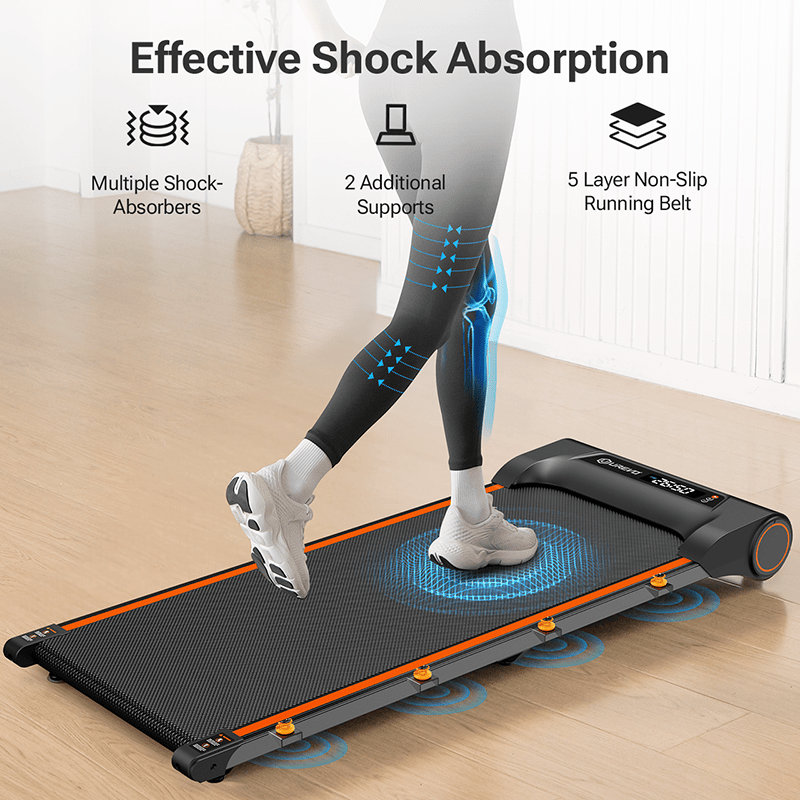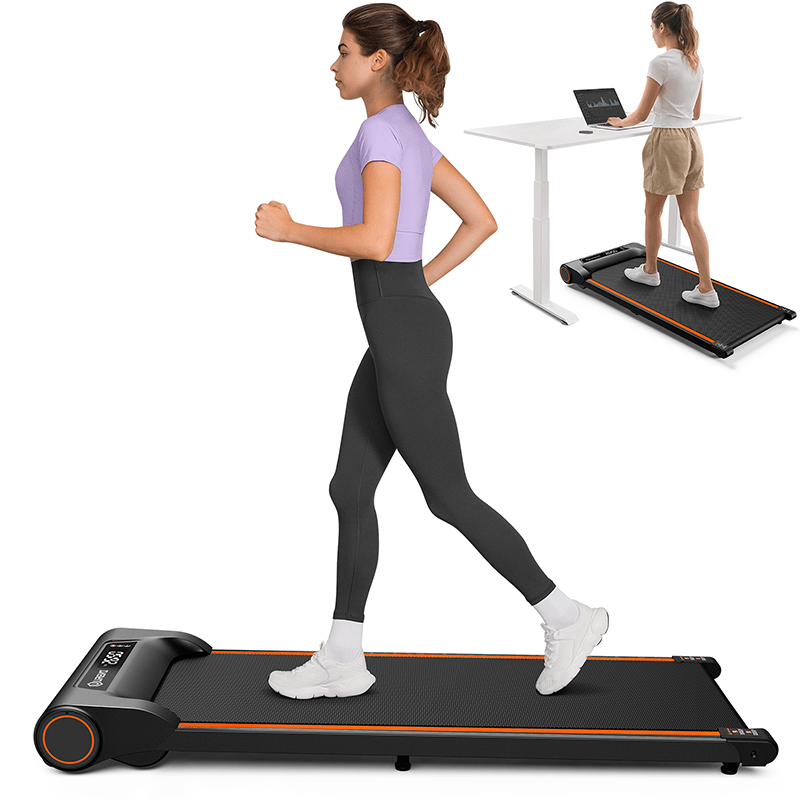Adding interval training to your treadmill routine is like shifting gears on a fast-paced drive. Just like a car alternates between speeding up and slowing down, interval training on a treadmill combines intense sprints with slower recovery periods.
What’s Interval Training?
Interval training mixes high-effort bursts (like sprints) with slower recovery times (like walking or jogging). It’s excellent for improving cardiovascular health, building muscle endurance, and pushing your aerobic and anaerobic limits.
Why Try Treadmill Intervals?
Treadmill intervals are a great way to improve cardio fitness fast. They can also help you burn more calories in a short time, tone your legs and core, and strengthen your mental stamina as you push through those intense bursts.
Get Started with Treadmill Intervals
For effective interval training, look for a treadmill with adjustable speed and incline. Good running shoes can adequately cushion your feet, especially during sprints, and a heart rate monitor can help you track intensity. And don’t forget a towel to stay dry and avoid slipping!
Learn the treadmill controls, especially the emergency stop button, before starting. Warm up with a five-minute walk or jog to get your muscles ready, and always cool down afterward to help your heart rate return to normal.

Interval Training Plans
If You’re a Beginner
Start with simple intervals to ease into the routine.
- Alternate between brisk and moderate walking. Walk briskly for two minutes, then slow down for one minute, and repeat for about 15-20 minutes. This is a gentle intro to interval training.
- Once you’re comfortable, try adding a light jog. Walk for two minutes, then jog for one minute, aiming for 5-7 cycles. This plan gradually prepares your body for more intense effort.
If You're at Intermediate Levels
After mastering the basics, you can add more intensity.
- Alternate between moderate and faster running. For example, run at a steady pace for a minute, then increase the speed for 30 seconds. Repeat for 20-25 minutes. This helps build speed endurance.
- For variety, change speeds every minute for three minutes, then take a recovery minute. Repeat this pattern 4-6 times to keep your mind engaged while giving your body a different kind of cardio challenge.
And You're Ready for HIIT
High-Intensity Interval Training is all about very short, intense sprints with longer recovery times. You can sprint for 20 seconds, then walk for a minute. Repeat for 8-10 rounds. HIIT boosts aerobic capacity and calorie burn, but it’s intense, so you’ll want to have a solid fitness base first.
If you want to push yourself hard, try incline intervals. Run for a minute at a 5% incline, then recover on a flat surface. Incline intervals work your glutes and hamstrings and build leg strength and stability.
Recovery and Progress
Rest periods are crucial—they allow your body to recover for the next effort. Typical rest intervals last 30 seconds to two minutes, depending on how intense your workout is. Rest helps prevent burnout and injury, especially in high-intensity workouts.
Progressive overload means gradually increasing the intensity of your workouts. You could bump up the speed, add more incline, or do more intervals. This keeps your body challenged, helping you get stronger without hitting a plateau.
The End
Treadmill intervals combine variety, intensity, and efficiency. They work for all fitness levels, and with regular practice, they can boost endurance, speed, and overall fitness. Whether you’re easing into intervals or going all-in with HIIT, each workout is a step closer to your fitness goals.

FAQ
How often should I do treadmill intervals?
Two to three times per week is ideal. Intervals are intense, so mixing them with other workouts helps prevent overuse and ensures full recovery.
How long should an interval workout be?
Beginners can start with 15-20 minutes, while advanced sessions may go up to 30 minutes. Focus on quality intervals rather than length.
Is interval training good for beginners?
Walking or walk-jog intervals are a great starting point. Progress gradually and If necessary, work with a trainer for professional guidance.
Should I eat before interval training?
A light snack or small meal about an hour before can keep your energy up. Avoid anything heavy, as it might be uncomfortable during intense sprints.
How do I know if I’m pushing too hard?
Watch for dizziness, sharp pain, or extreme fatigue. Listen to your body to avoid injuries and keep interval training sustainable.


























